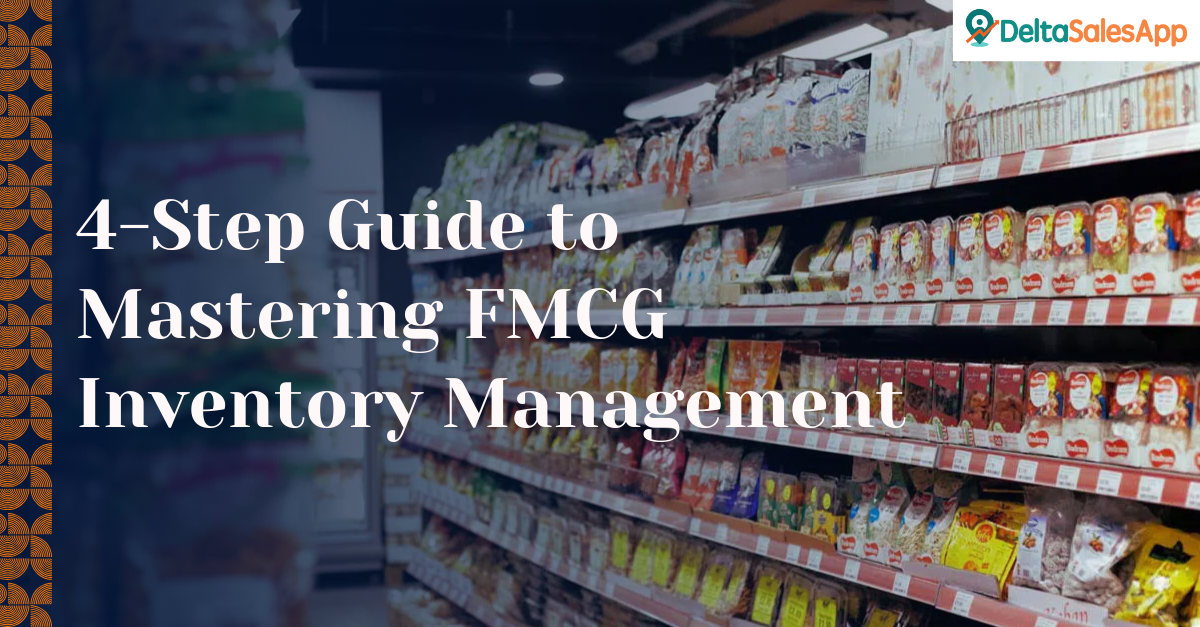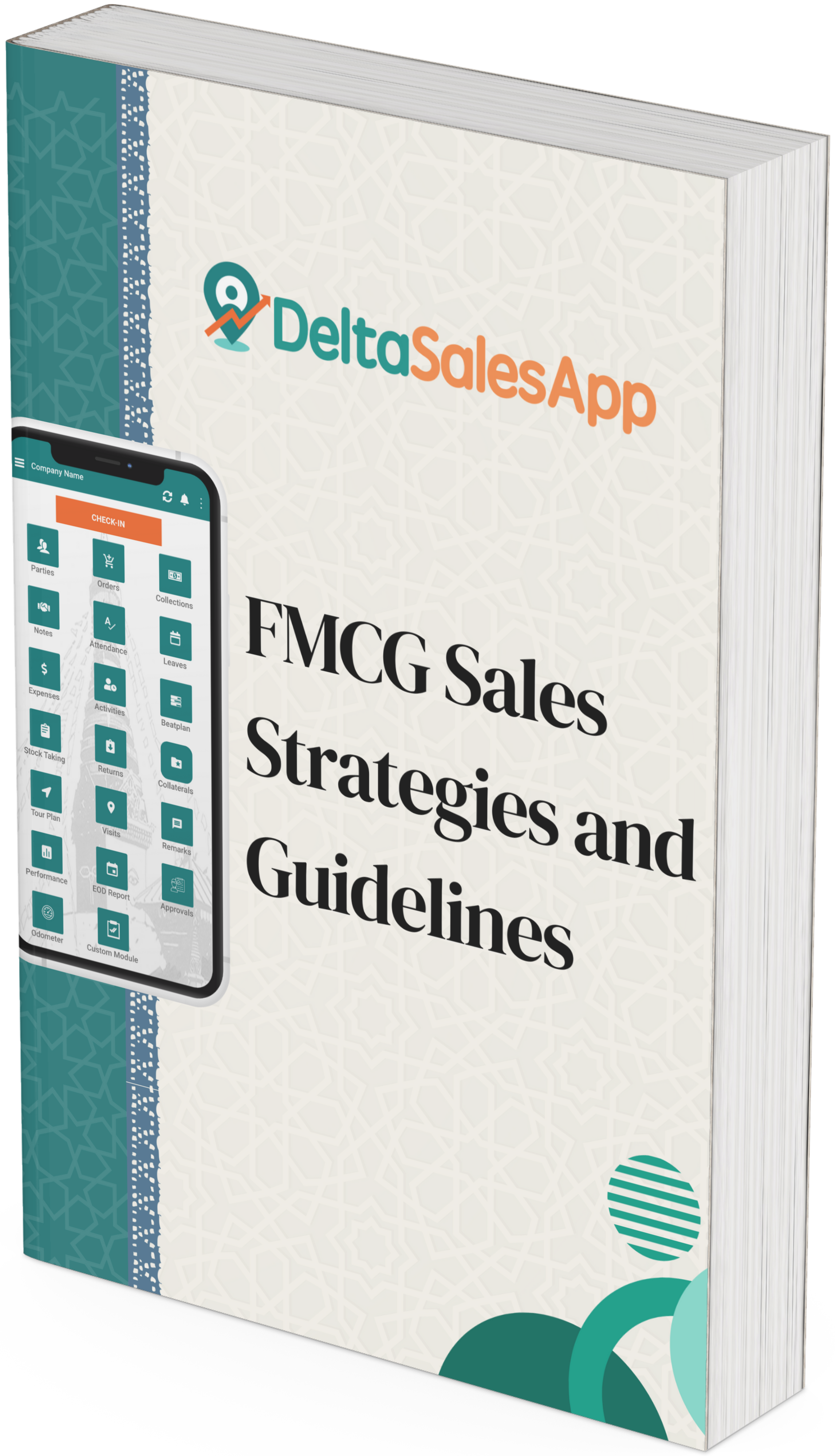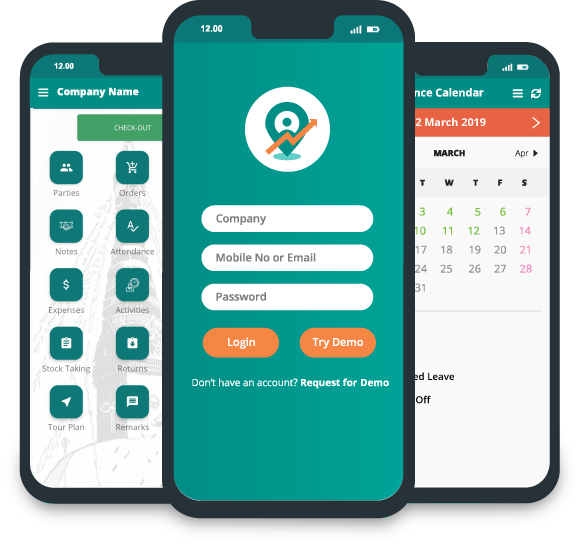4-Step Guide To Mastering FMCG Inventory Management

In the fast-paced world of FMCG (Fast-Moving Consumer Goods), effective inventory management is a crucial factor that directly impacts your sales and profitability. A well-managed inventory system can improve your distribution, increase your ROI, and ensure smoother operations. Whether you're a sales manager, distributor, or business owner, mastering inventory management is key to maintaining healthy stock levels and driving business growth.
In this blog, we’ll walk you through a proven 4-step process to optimize your inventory management. Following these steps will help you efficiently manage your distributor's inventory, prevent stockouts, and enhance overall performance.
1. Start with ABC Analysis: Identify Key Products
The first step in efficient inventory management is conducting an ABC analysis. ABC analysis is a categorization method that divides your inventory into three distinct categories: A, B, and C, based on their importance and contribution to sales.
A-category items are your high-value, fast-moving products that generate the majority of your sales. These items typically account for about 80% of your total sales, even if they make up only 20% of your stock.
B-category items have moderate sales and value. They contribute to about 15% of your total sales but may account for a larger portion of your stock.
C-category items are slow-moving and less valuable, contributing to about 5% of sales but making up a significant portion of your inventory.
By identifying which products belong to which category, you can focus your efforts on ensuring that A-category items are always in stock. A-category products are your priority because they have the most significant impact on your overall sales. Out-of-stock A-category items can lead to missed sales and frustrated customers, which is why it’s critical to avoid running out of stock on these products.
Why is ABC Analysis Important?
ABC analysis helps you prioritize your inventory management efforts, allowing you to invest more time and resources in managing high-priority, fast-moving items. By identifying and managing your A-category items properly, you reduce the risk of stockouts and keep your sales flowing smoothly.
2. Calculate Stock Turnover Rate (STR): Monitor How Fast Products Sell
Once you’ve identified the critical products, the next step is to calculate the Stock Turnover Rate (STR). This metric helps you understand how often an item is sold and replaced within a given period (such as 3 or 6 months).
In simple terms, the STR tells you how many days it takes for an item to sell out completely at your distributor’s point. For example, if you calculate that a product sells out in 30 days, this indicates a higher turnover rate compared to products that sell out in 60 days.
How to Calculate STR:
Identify the sales period: Choose a time frame (such as 3 or 6 months).
Measure how many times an SKU (Stock Keeping Unit) is sold out during this period.
Calculate the turnover rate: Divide the total units sold by the average stock level for the product during that time.
Knowing the STR of each product enables you to make informed decisions about how much stock to allocate and order. If an item has a high turnover rate (fast-selling), you’ll want to ensure it’s always in sufficient stock at the distributor's location to meet demand.
Why STR is Important: Tracking the STR allows you to understand how quickly your products are moving in the market. It also helps forecast future stock requirements and minimizes the risk of overstocking or understocking.
3. Set Inventory Norms: Establish Ideal Stock Levels
Once you’ve calculated the Stock Turnover Rate (STR) for your fast-moving products, the next step is to establish inventory norms. Inventory norms refer to the optimal quantity of stock that should be maintained at your distributor's location to meet customer demand without overburdening the system.
For instance, if your STR for a particular SKU indicates that it sells out in 15 days, you should aim to maintain 15 days’ worth of stock at the distributor’s warehouse. This ensures that the product will always be available to meet demand while avoiding the risks of overstocking, which can tie up capital and storage space unnecessarily.
How to Set Inventory Norms:
Determine ideal stock levels: Calculate how many days of stock should be available for each product (based on sales data and STR).
Monitor product demand trends: Keep an eye on seasonal trends, promotions, and other factors that could impact demand.
Adjust as necessary: Regularly review and adjust your norms based on market conditions, distributor performance, and sales trends.
Why Inventory Norms Matter: Setting inventory norms ensures that you maintain the right balance between having enough stock to meet customer needs and avoiding excess inventory that could result in inefficiencies. It also helps to reduce the risk of stockouts and missed sales opportunities.
_11zon_1743663074.jpg)
4. Track and Monitor Inventory: Ensure Compliance with Set Norms
The final step in optimizing inventory management is regular tracking and monitoring. This involves comparing actual stock levels with the set inventory norms and taking corrective action when necessary.
To do this effectively, you need to use stock and sales reports that provide visibility into your distributor’s closing stock levels, sales velocity, and product availability. These reports will help you track how many days of stock remain for each product and whether it aligns with the set norms.
Steps to Effectively Track Inventory:
Review stock and sales reports regularly: Ensure that the closing stock of each SKU matches your forecasted stock levels and STR.
Identify discrepancies: If the stock is lower than the established norm, take action to replenish inventory promptly. If it’s higher, evaluate whether it's necessary to adjust your inventory norms.
Proactive intervention: Based on the report, you can plan primary orders (bulk orders) to restock products that are running low or slow-moving items that need to be cleared.
Why Tracking is Crucial: By regularly tracking your inventory, you can prevent stockouts and overstocking. It also allows you to make quick decisions on reordering, reducing the chances of lost sales or excess inventory. Furthermore, effective tracking enables you to maintain consistent stock levels and helps in fine-tuning your future inventory management strategy.
Conclusion: The Power of Strategic Inventory Management
Effective inventory management is not just about tracking stock levels; it’s about understanding your product movement, aligning stock levels with demand, and optimizing your distribution network for maximum efficiency. By following these 4 essential steps—ABC Analysis, calculating Stock Turnover Rate, setting Inventory Norms, and regularly tracking inventory—you will build a robust system that not only improves sales but also strengthens your distributor relationships.
Implementing these strategies can lead to
Increased sales due to the availability of fast-moving products.
Improved ROI by reducing overstocking and understocking situations.
Stronger, long-term partnerships with distributors.
A more efficient and streamlined inventory process.
Take the first step today by analyzing your inventory and applying these techniques to streamline your FMCG business operations.
FAQs:
1. What is the biggest challenge in FMCG inventory management?
One of the biggest challenges is maintaining the right stock levels—avoiding both stockouts and overstocking. Fast-moving products need to be readily available, while slow-moving items shouldn’t take up excessive storage space.
2. How often should I conduct an ABC analysis?
It’s recommended to perform an ABC analysis every quarter to ensure your categorization reflects the latest sales trends and demand shifts.
3. How do I determine the ideal stock level for a product?
Use the Stock Turnover Rate (STR) to calculate how often a product sells out and set inventory norms accordingly. Ideally, maintain stock levels that can cover sales for the expected turnover period (e.g., 15 days of stock if STR shows the item sells out in 15 days).
4. How can I prevent stockouts of high-demand products?
Regularly track sales reports and inventory data, set minimum stock thresholds, and use automated inventory tracking systems to get real-time alerts when stock levels drop.
5. What tools can help with FMCG inventory management?
Field sales management software, ERP systems, and automated inventory tracking tools can help streamline stock monitoring and ensure seamless inventory control.









